Tempeh is an underrated plant-based protein that many vegans are missing out on! Not only is it jam-packed with nutrients and protein, but it’s also just as versatile and tasty as tofu. But if you’re new to this tasty protein, how are you supposed to know how to cook it?
This comprehensive guide teaches you how to cook tempeh and how to transform it from a dull soy block to a flavorful vegan meat substitute with crispy edges.
I’m passing along all of the tips and tricks I’ve learned from molding tempeh haters into tempeh lovers. You’ll not only learn the easy way to cook it but also how to mask its natural bitterness with irresistible flavors. Put your new skills to use in any of the beginner-friendly tempeh recipes below and dig in!
Table of Contents
1. Tempeh 101
2. How to slice tempeh
3. How to improve the flavor of tempeh
4. How to pan-fry tempeh
5. Frequently asked questions
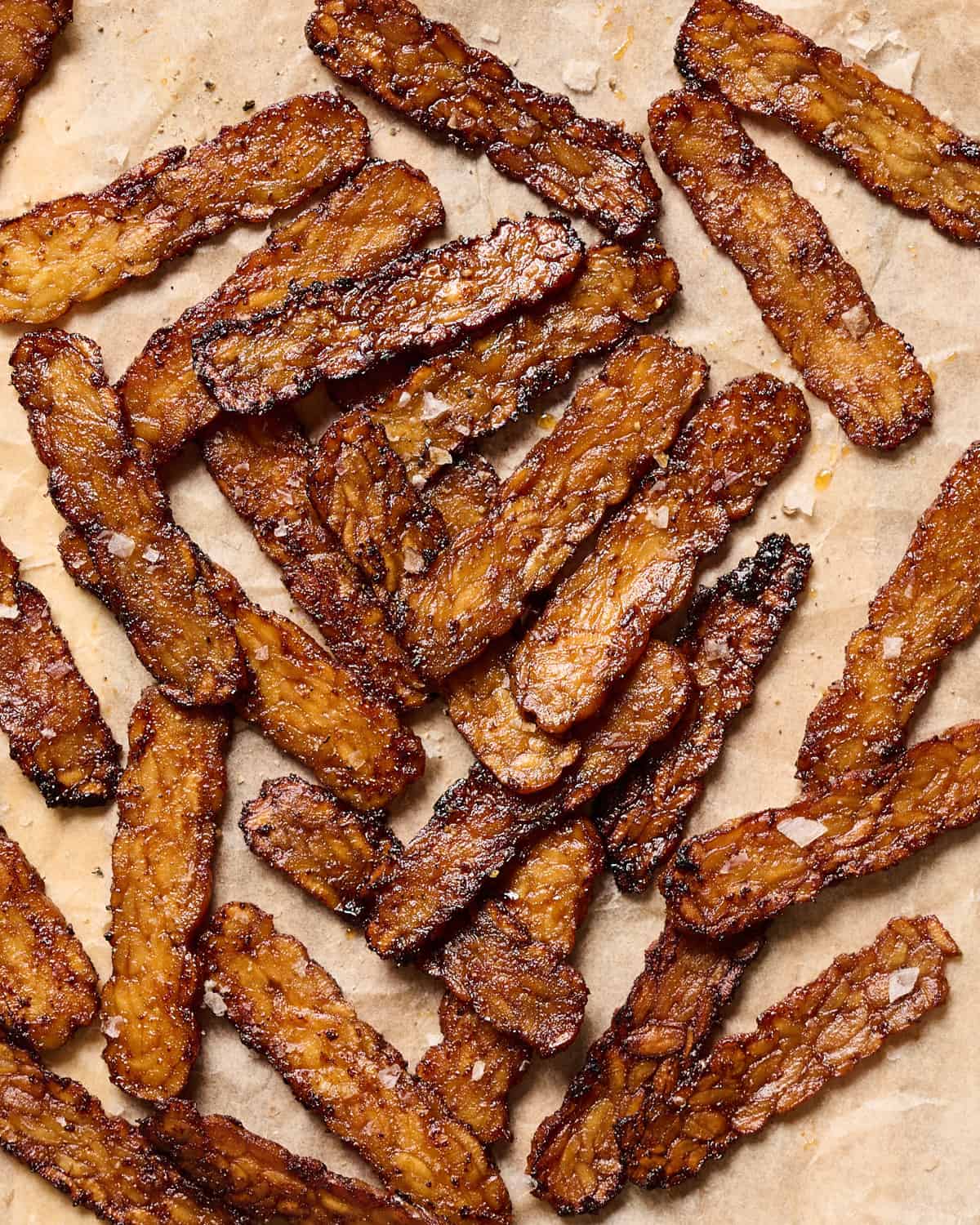
Tempeh 101
What is tempeh?
Tempeh is a popular Indonesian food made from fermented soybeans. It’s basically a soy block you can find in grocery stores sold as an unflavored or pre-flavored rectangle, strips, or crumbles.
Just like tofu, tempeh is often used as a plant-based meat alternative. It soaks up flavors like a sponge, is easy to cook, and is always welcome in a sandwich, on grain bowls, or in tacos. Plus, it also happens to be really good for you (more on that below)!
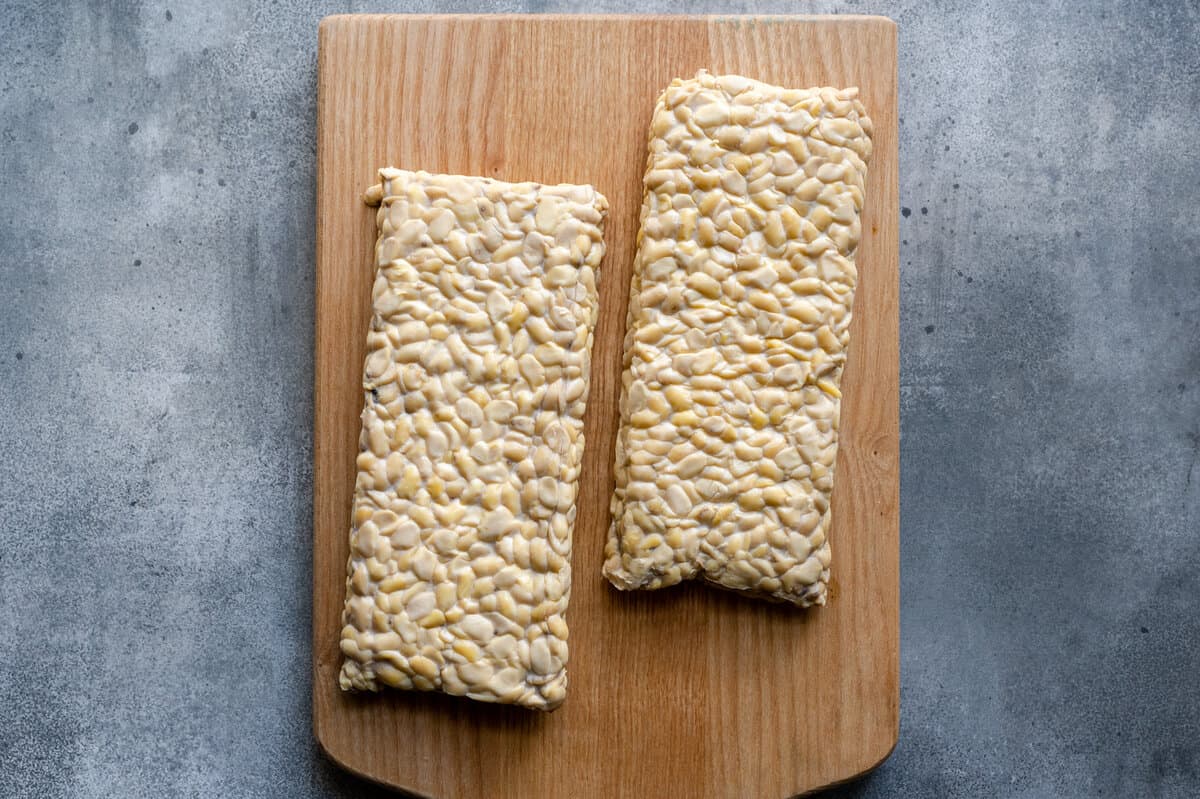
Is tempeh healthy?
Tempeh is a nutrition superstar! Just 3 ounces of tempeh contains 18 grams of protein and 6 grams of fiber!
According to WebMD, it’s one of the best plant-based sources of iron as well!
A common myth is that soy is either bad for you or increases your risk of cancer. Wrong! Tempeh and other soy products have actually been associated with reducing your risk of certain cancers, particularly breast and prostate cancer. The soy isoflavones in tempeh have also been proven to lower your cholesterol, making it a heart-healthy food.
Lastly, tempeh is fermented, which means it’s loaded with gut-healthy bacteria and probiotics. The healthy bacteria from the fermented goodness can improve your digestion and the overall health of your microbiome.
Furthermore, if you’ve had trouble digesting soy products in the past, you should have an easier time digesting tempeh (unless you have a soy allergy, of course).
What are the different varieties of tempeh?
If you’re familiar with tofu, then you know it comes in soft, medium, and firm varieties. This isn’t really the case for tempeh. It usually only comes in one form: rectangular soy blocks. But as its popularity rises, so do the varieties, which is why you can sometimes find tempeh bricks, cakes, slices, or crumbles.
Tempeh also comes either pre-flavored (e.g., buffalo tempeh) or plain. I prefer to buy plain/classic tempeh and flavor it myself with a sauce or marinade.
I also prefer to stay away from the “three grain” varieties of tempeh (commonly sold at Trader Joe’s). These varieties contain whole grains, like barley, brown rice, and millet, which can make the tempeh a little too crunchy for pan-frying.
Tip: In my recipes, I always call for “original” unseasoned tempeh.
What does tempeh taste like?
Just because you can eat raw tempeh doesn’t mean you should. It’s naturally bitter with earthy, nutty, and subtle umami notes (similar to mushrooms). Meanwhile, the texture is crumbly and slightly chewy.
Thankfully, tempeh will absorb any flavor you throw at it. You can take it from ‘blah’ to ‘wow’ with a few simple techniques, such as slicing it into small and thin pieces, tossing it in a savory-sweet-tart sauce that masks its bitterness, and pan-frying the pieces so they take on crispy exteriors and chewy, tender middles.
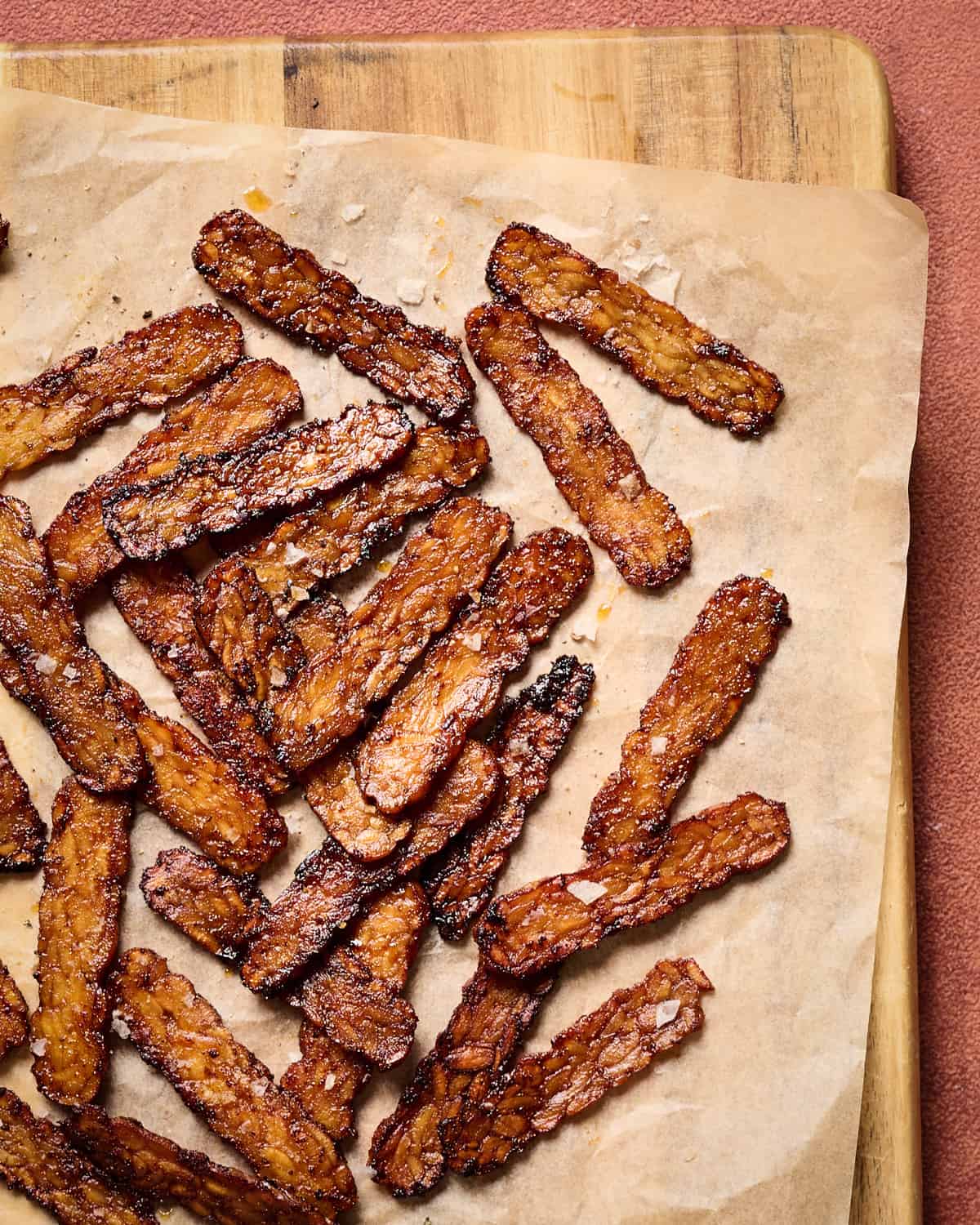
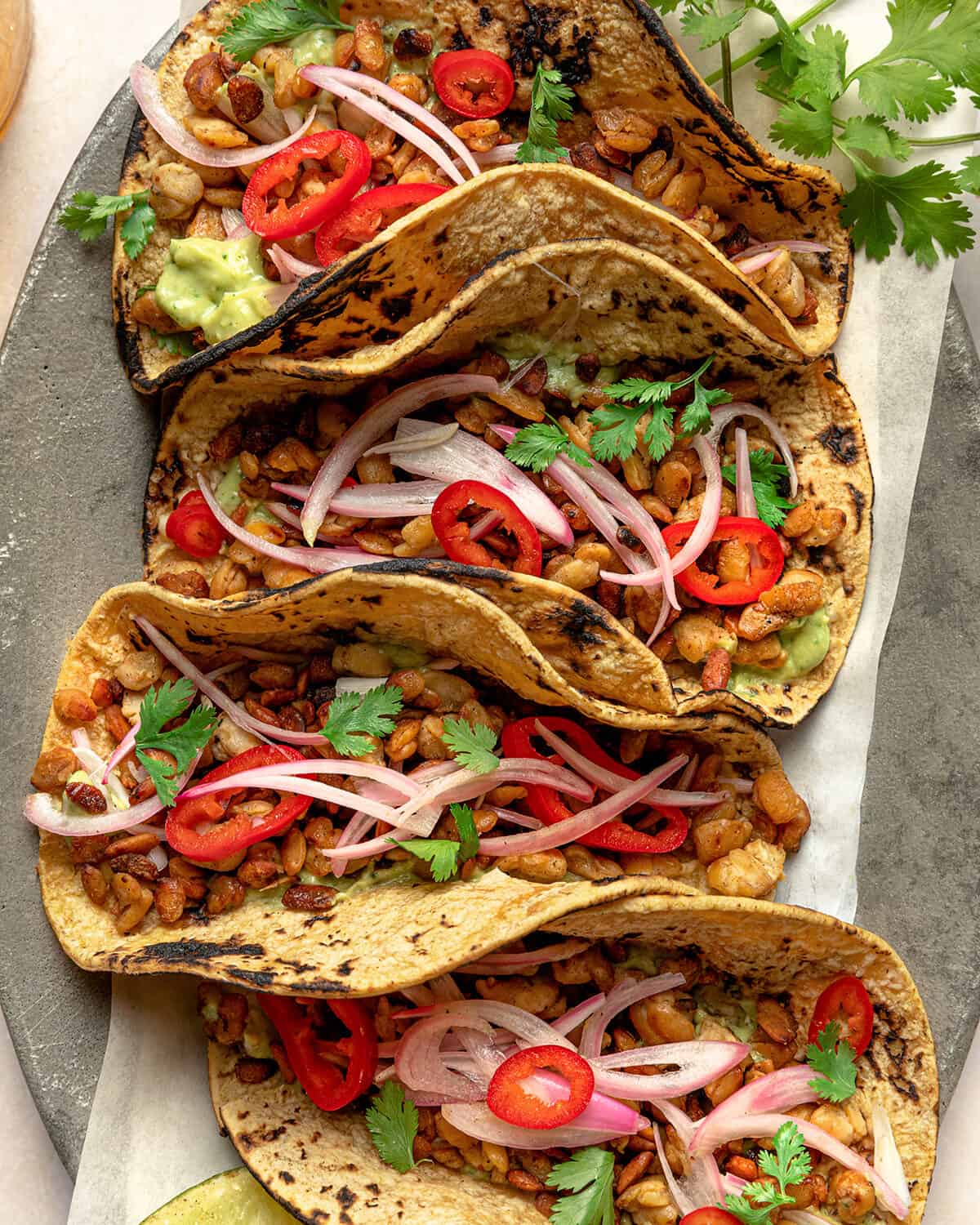
How to slice tempeh
Learning how to prepare tempeh is straightforward. Unlike tofu, a brick of tempeh should be meticulously sliced before you start cooking so you can get the most out of it. Frying the brick as-is or not taking the time to finely slice it will yield bitter-tasting and chewy tempeh.
Option 1: Strips
Thin strips are my favorite because tempeh marinades and sauces have an easier time penetrating through. Thick strips don’t do this as well, and leave a more prominent earthy, bitter taste behind.
You can slice the tempeh into 1/2″ inch pieces, then flip each piece on its side and slice lengthwise to make thinner (left photo). Or slice them very thinly, about 1/8″ thick (right photo).
Sliced tempeh is a great all-purpose option. This is what I use in my BBQ Tempeh and Tempeh Bacon recipes.
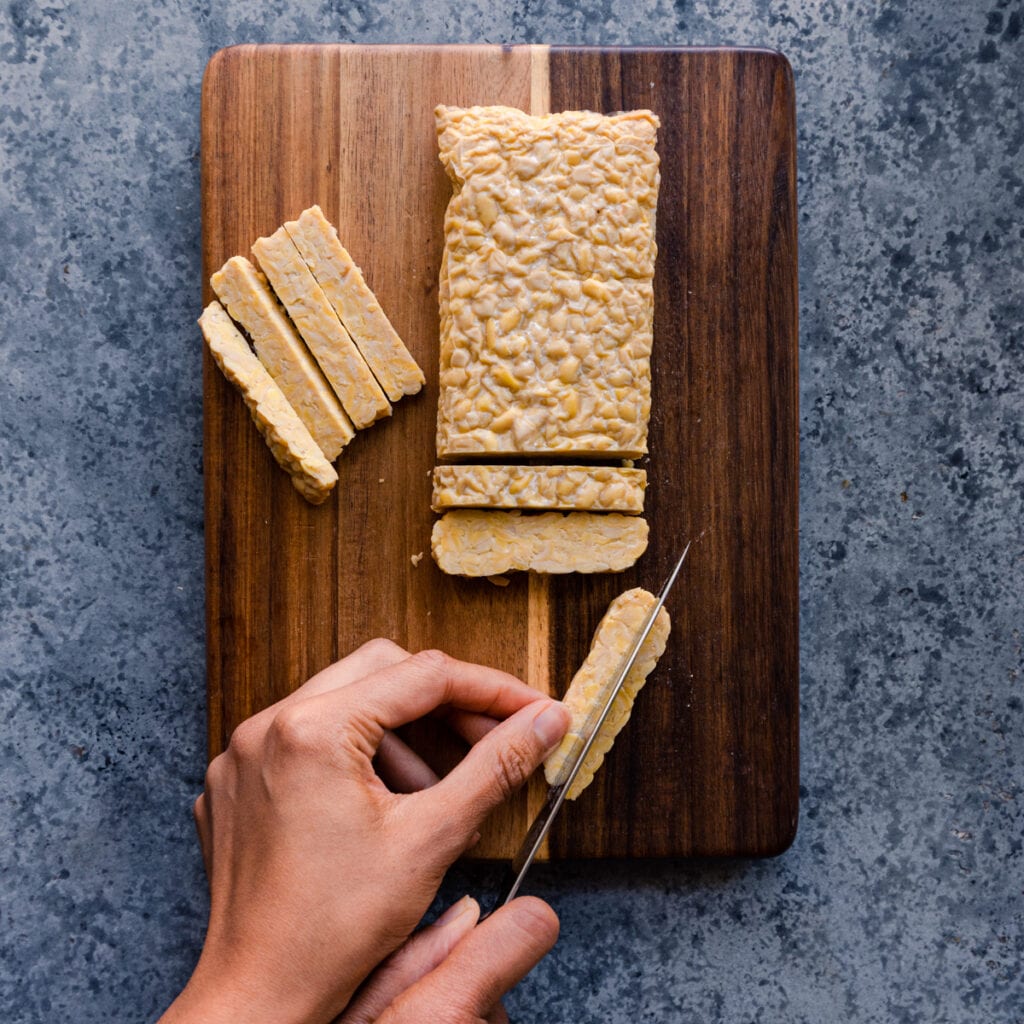
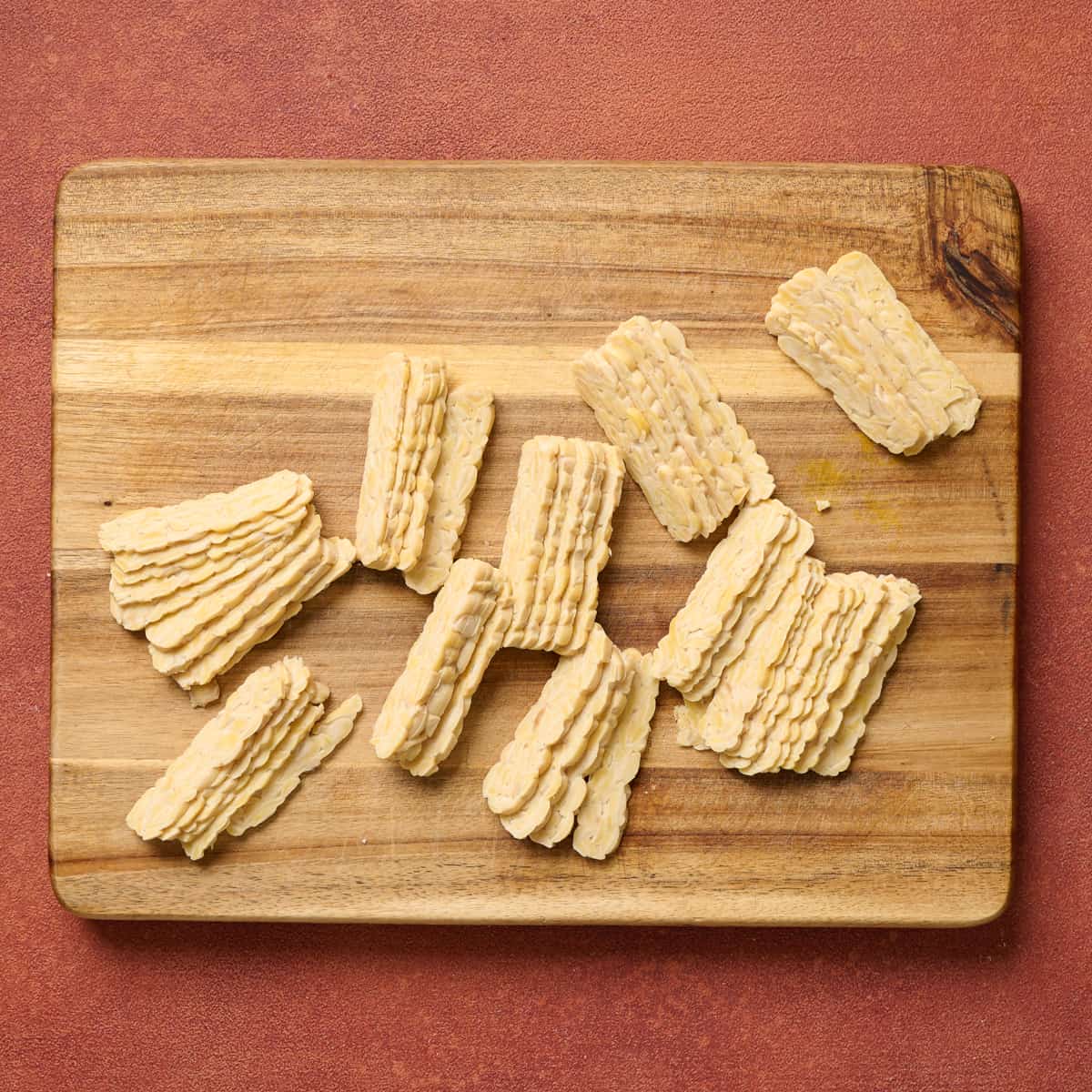
Option 2: Crumbled or grated
You can crumble a brick of tempeh into very small pieces by hand or with a box grater, as I do in the Hearty Tempeh Chili recipe from my cookbook. The crumbles are perfect for vegan tacos and stir-fries because the meaty, crispy texture looks, tastes, and feels like a more wholesome vegan ground meat.
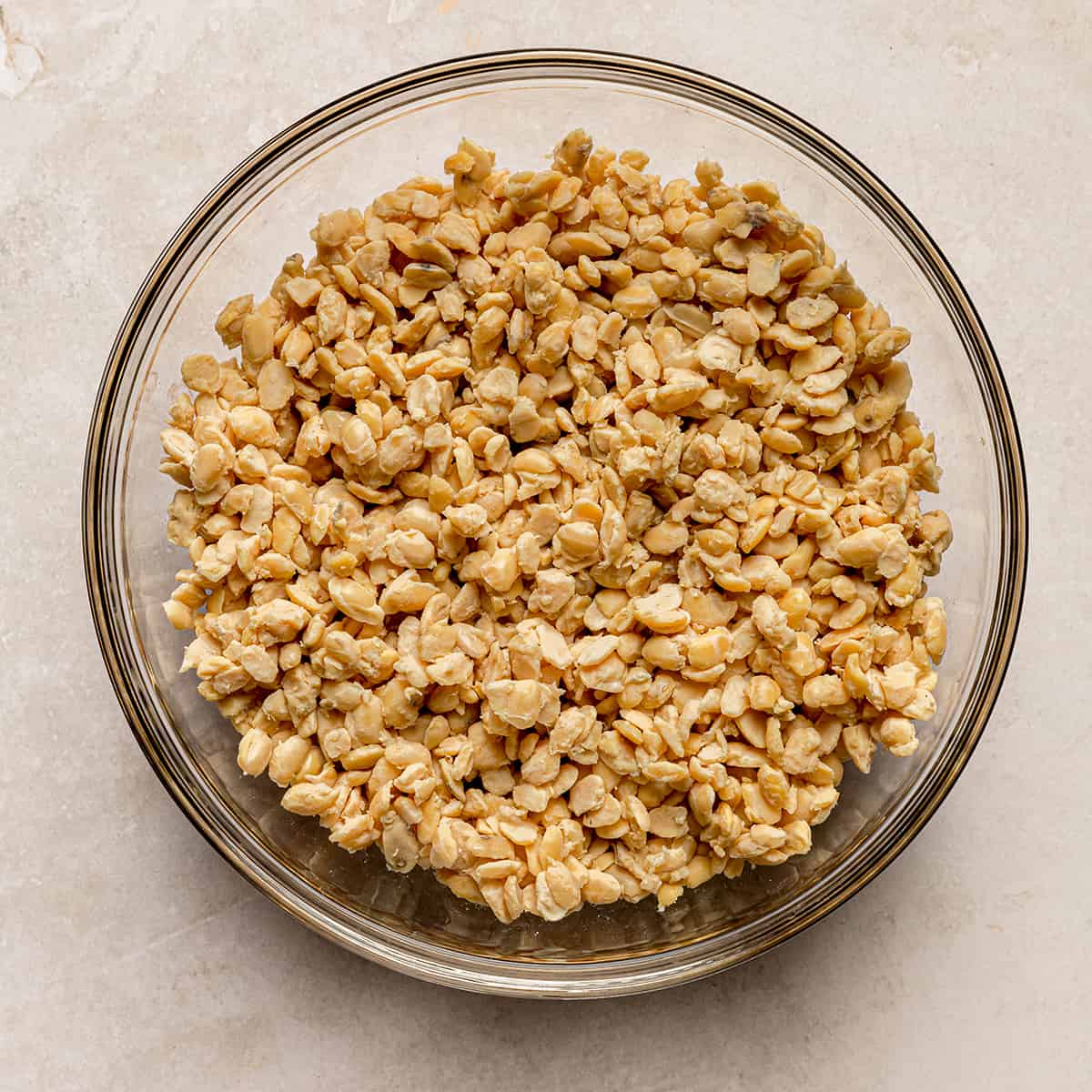
Option 3: Matchsticks
This is the method I use in my Tempeh Kecap recipe. It takes a few extra minutes to slice tempeh into small matchsticks but the crispy results are worth it. There’s very little surface area, making the tempeh matchsticks even crispier than crumbles.
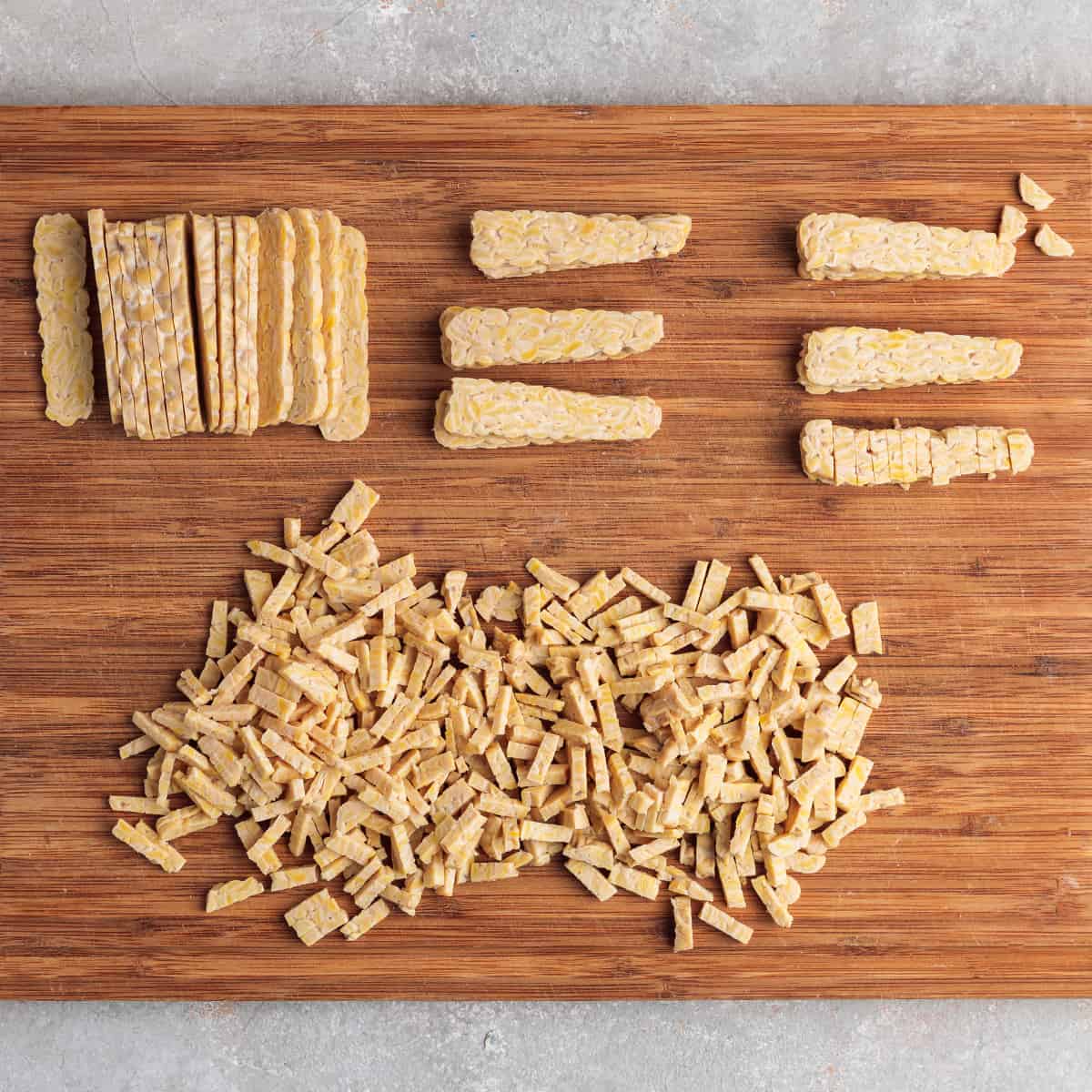
Option 4: Cubed (not my favorite)
Some recipes call for cubed tempeh, similar to how you would cube tofu, but I personally avoid this method. Larger cuts just don’t soak in the flavor from sauces and marinades as well, and they almost always leave the natural bitter flavor behind.
Option 5: Triangles (not my favorite)
This is another common method of slicing tempeh, especially for grilled tempeh “steaks.” These can be nice on a grain bowl or salad, but again, the larger cuts don’t do it for me.
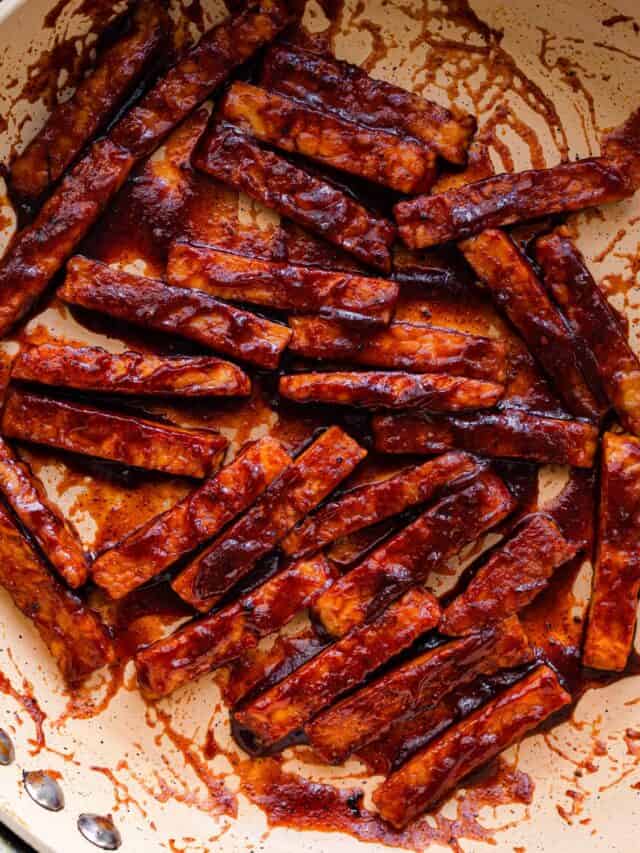
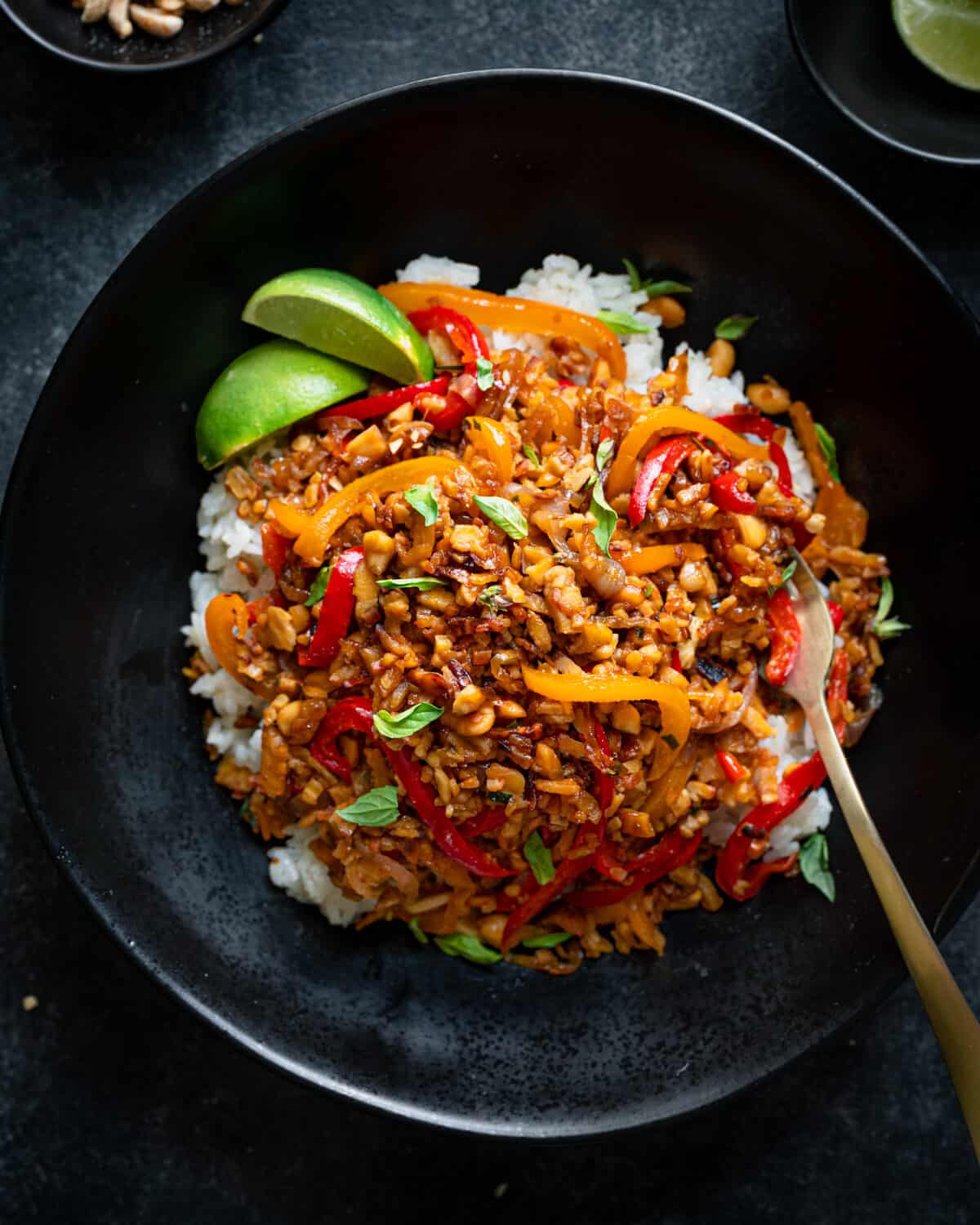
How to improve the flavor of tempeh
Many folks are clueless about how to cook tempeh because it has a naturally bitter, earthy flavor and crumbly texture. But the good news is that there are several techniques you can use to significantly improve its flavor and texture.
1. Steam tempeh
Steaming the tempeh will remove some of the bitterness before cooking it further. This step isn’t always necessary, especially if you’re pairing the tempeh with a boldly-flavored sauce.
You can steam tempeh using a steamer basket in a saucepan or a microwave-safe dish covered with water or vegetable broth. It should take 5 to 10 minutes to steam.
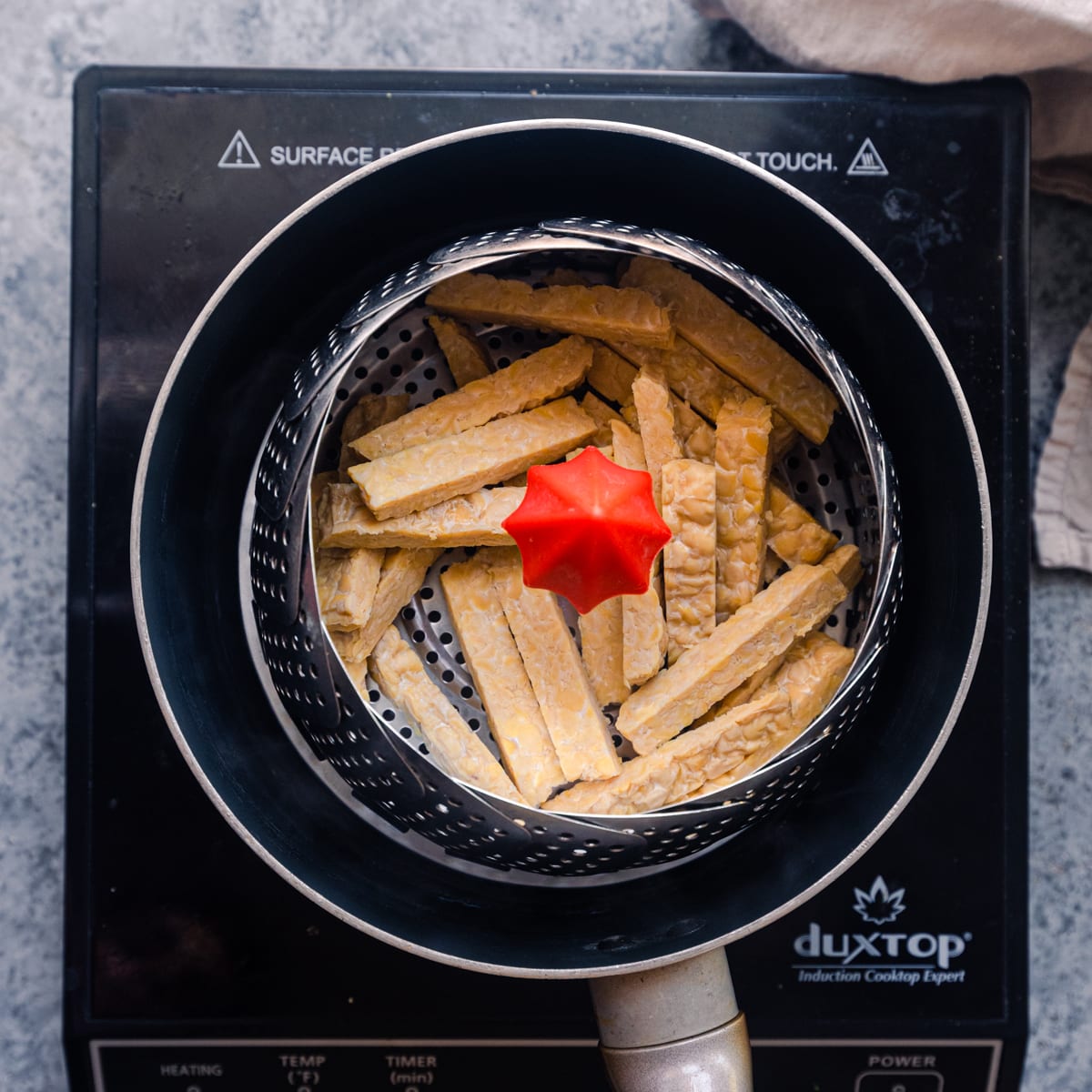
2. Stick to smaller cuts
Tempeh always tastes better and cooks more evenly when it’s sliced into small strips, matchsticks, slices, or crumbles. The smaller pieces always soak in the flavors from the tempeh marinades and sauces better, and have an easier time crisping up in the pan.
3. Pan-fry tempeh
In my many tests of tempeh recipes, both for recipes here on the blog and for my upcoming cookbook, pan-frying tempeh was always the best cooking method.
I mean, deep frying is delicious, too, but it isn’t as easy as pan frying. There’s hot, splattering oil to worry about and always a big mess to clean up. Plus, I assume most folks don’t want to deep fry on a regular basis.
Want to bake or air fry tempeh? Learn why I don’t recommend these methods in the FAQs section below.
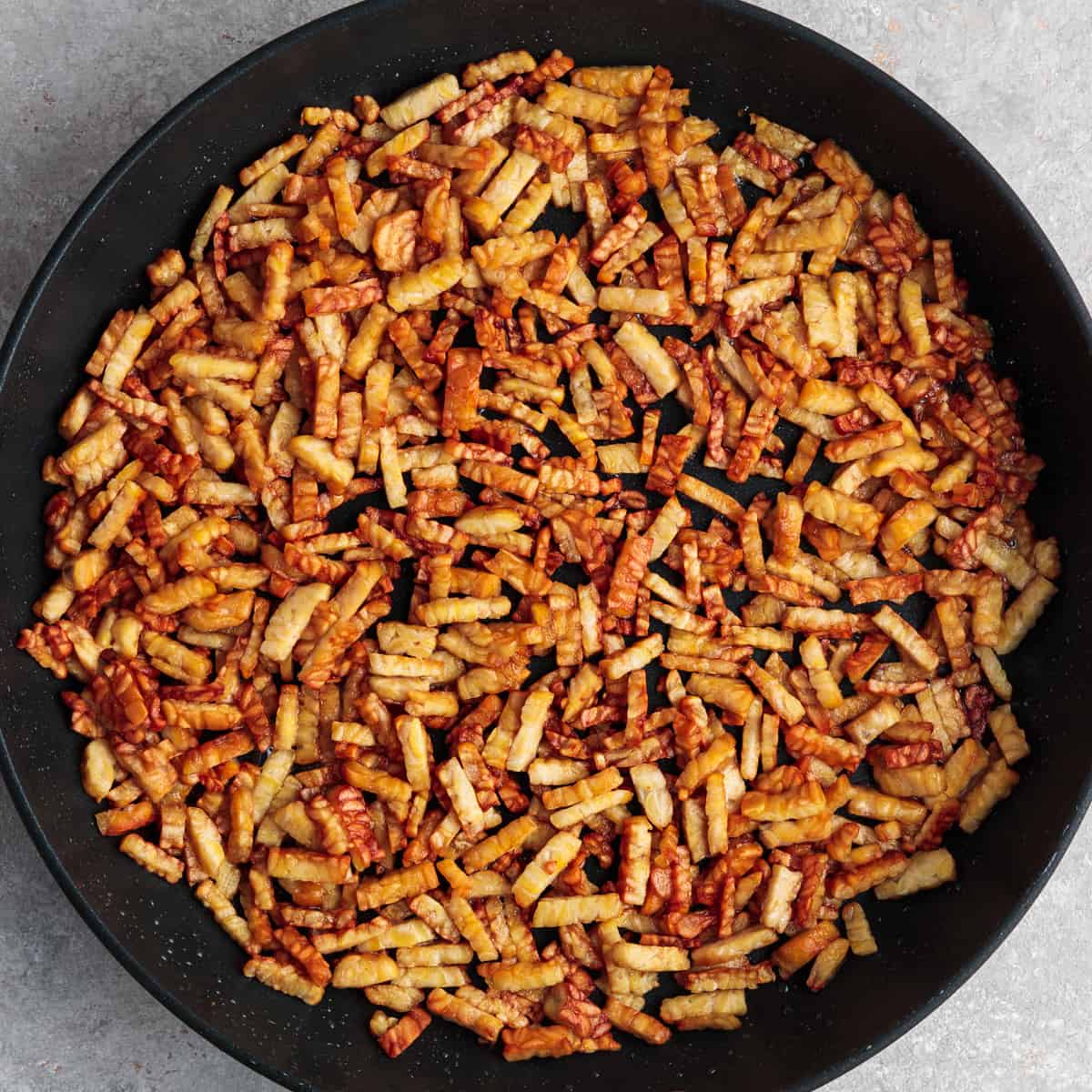
4. Pair tempeh with a great sauce
You can easily mask tempeh’s natural bitterness with a really great sauce. Anything tart, slightly sweet, and salty is perfect, as those flavors balance bitterness.
I like to toss my pan-fried tempeh crumbles with soy sauce (salty, savory) and lime juice (tart) in my Tempeh Tacos recipe and pair those with pickled shallots (tart, sweet). The acidity is the cherry on top of this well-balanced meal.
My Tempeh Bacon isn’t bitter in the slightest even though it isn’t steamed ahead of time. Instead, the marinade infuses the slices with tartness (rice vinegar), sweetness (maple syrup), and salty/savoriness (soy sauce).
5. Marinate tempeh
You can also marinate tempeh in a bold-flavored sauce, like I do in my tempeh bacon recipe.
Method: Place the tempeh strips in a ziptop bag, shallow container, or large bowl, and pour the marinade over top. Seal the bag/container or cover the bowl and set it aside in the fridge while the flavors absorb.
How long to marinate: The strips should marinate for a minimum of 1 hour, but even longer is better. In our tests, we found that marinating tempeh for 8 hours yielded (1) a richer flavor profile and (2) sticky, sauce-covered, and caramelized cooked tempeh with excellent crispy edges.
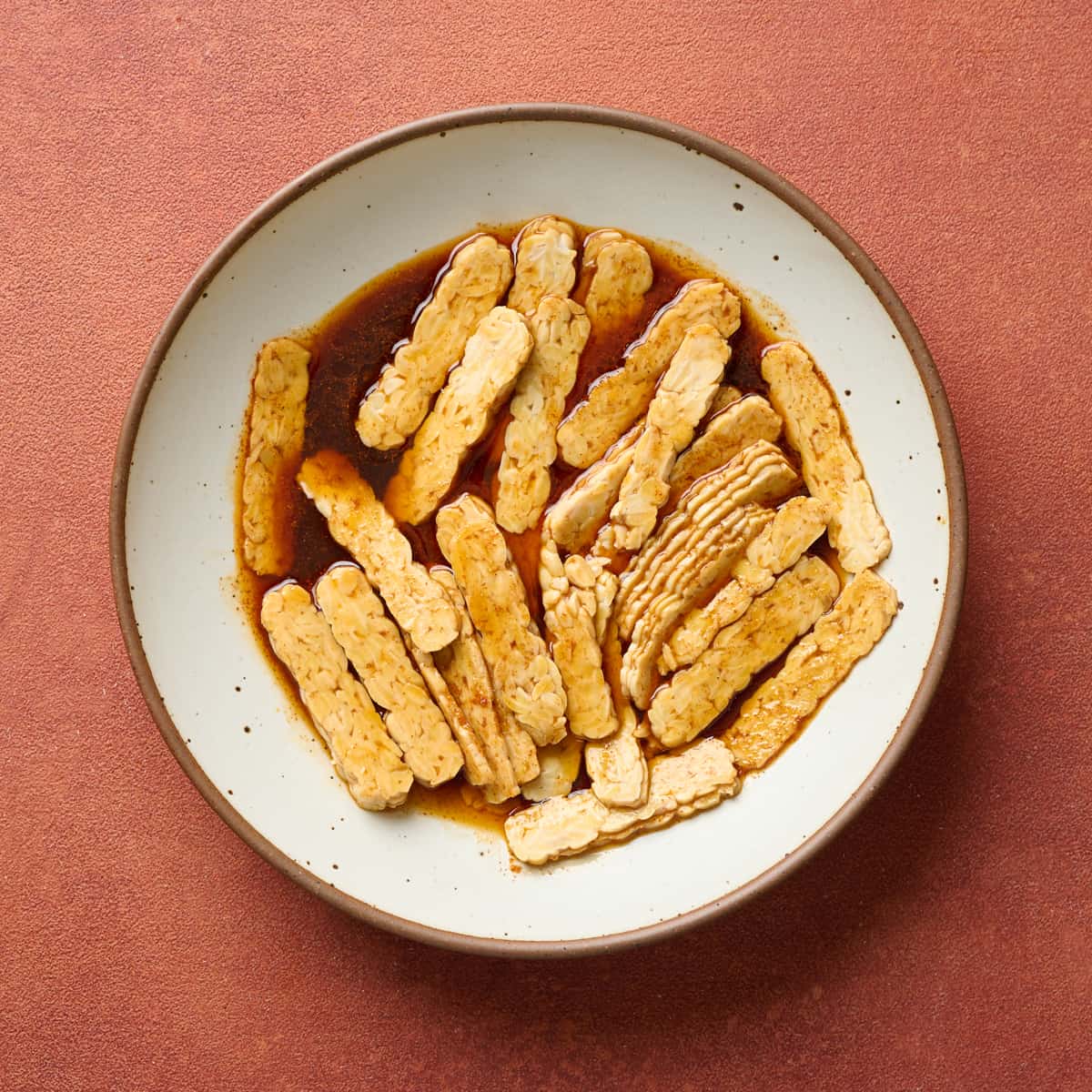
How to pan-fry tempeh
The tastiest way to cook tempeh is to pan-fry it in an oiled skillet on the stove. This way, the tempeh can absorb more flavor and will not dry out. Plus, who can resist that golden crust on the outside?
Before you start, make sure you’re using the right equipment. A non-stick pan will make pan-frying the tempeh easier and prevent it from sticking.
If you don’t have a non-stick pan, a well-greased cast iron pan or even a stainless steel skillet will do. Just remember to adequately preheat it before getting started (learn how to use a stainless steel skillet almost like a nonstick pan here).
How to pan-fry tempeh slices and strips
- Start by slicing the tempeh into very thin slices or strips. Meanwhile, preheat non-stick frying pan over medium heat.
- Pour the cooking oil into the pan. 1 ½ tablespoons is enough for an 8-ounce block; if using marinated tempeh, use just 1 tablespoon of oil. Add the tempeh to the pan when the oil starts to shimmer. Do not crowd the tempeh strips/slices in the pan. Instead, leave some space in between each one so they have a chance to crisp up. If needed, cook them in two batches.
- For dry tempeh (not marinated): As the first side is cooking, brush the top sides with oil or cooking spray. This ensures that the top sides will brown evenly and get nicely crispy instead of getting charred in spots.
- Flip and cook the slices on the other side until golden brown.
- Transfer the cooked tempeh to a paper towel-lined plate to allow the excess oil to drain. Enjoy!
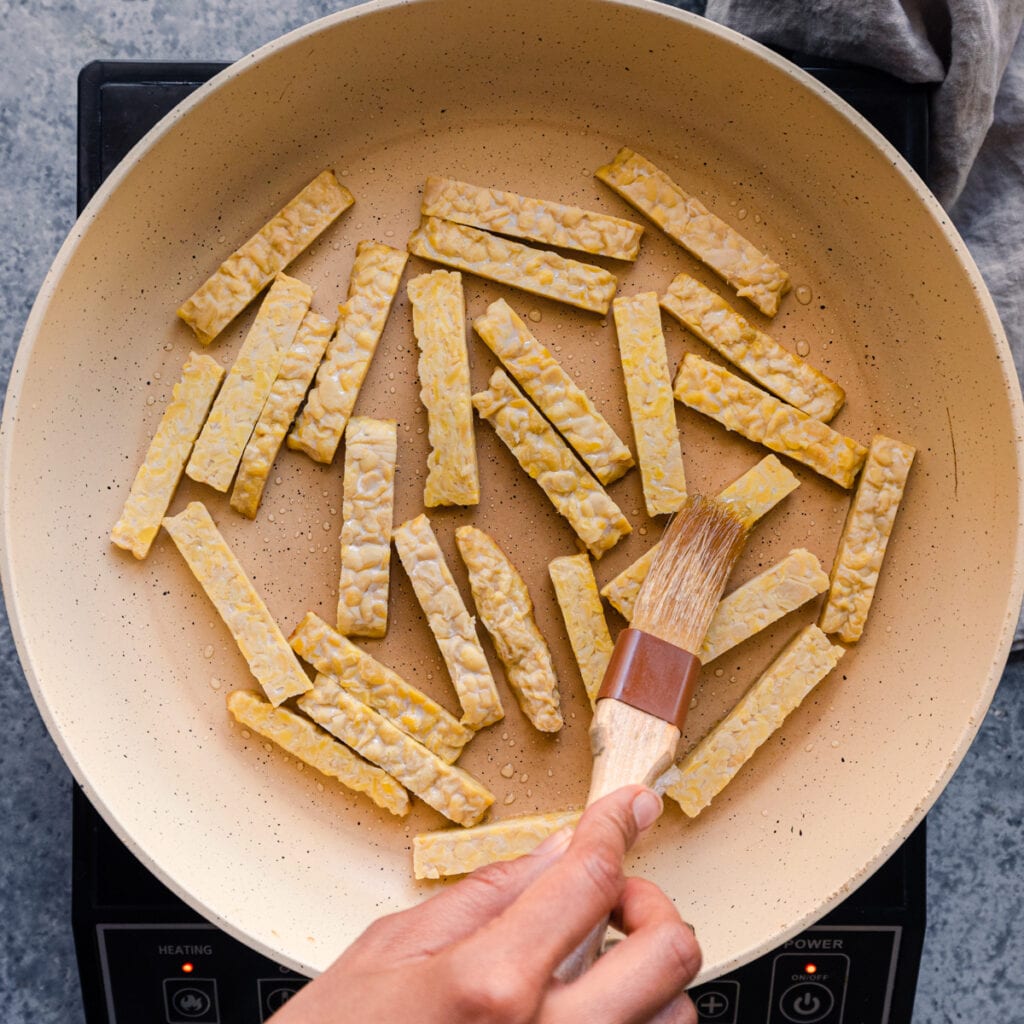

How to pan-fry crumbled or matchstick tempeh
- Preheat a non-stick skillet over medium-high heat and pour in the oil. 1 ½ tablespoons is enough for an 8-ounce block; if using marinated tempeh, use just 1 tablespoon of oil.
- Once the oil hot and shimmery, add the tempeh. Leave it alone at first; it’ll crisp better when it sits still. Stirring every 1 ½ to 2 minutes should do it. Once it’s crisped and golden brown, it’s done!
- If needed, transfer the cooked tempeh to a paper towel-lined plate to allow the excess oil to drain. Enjoy!
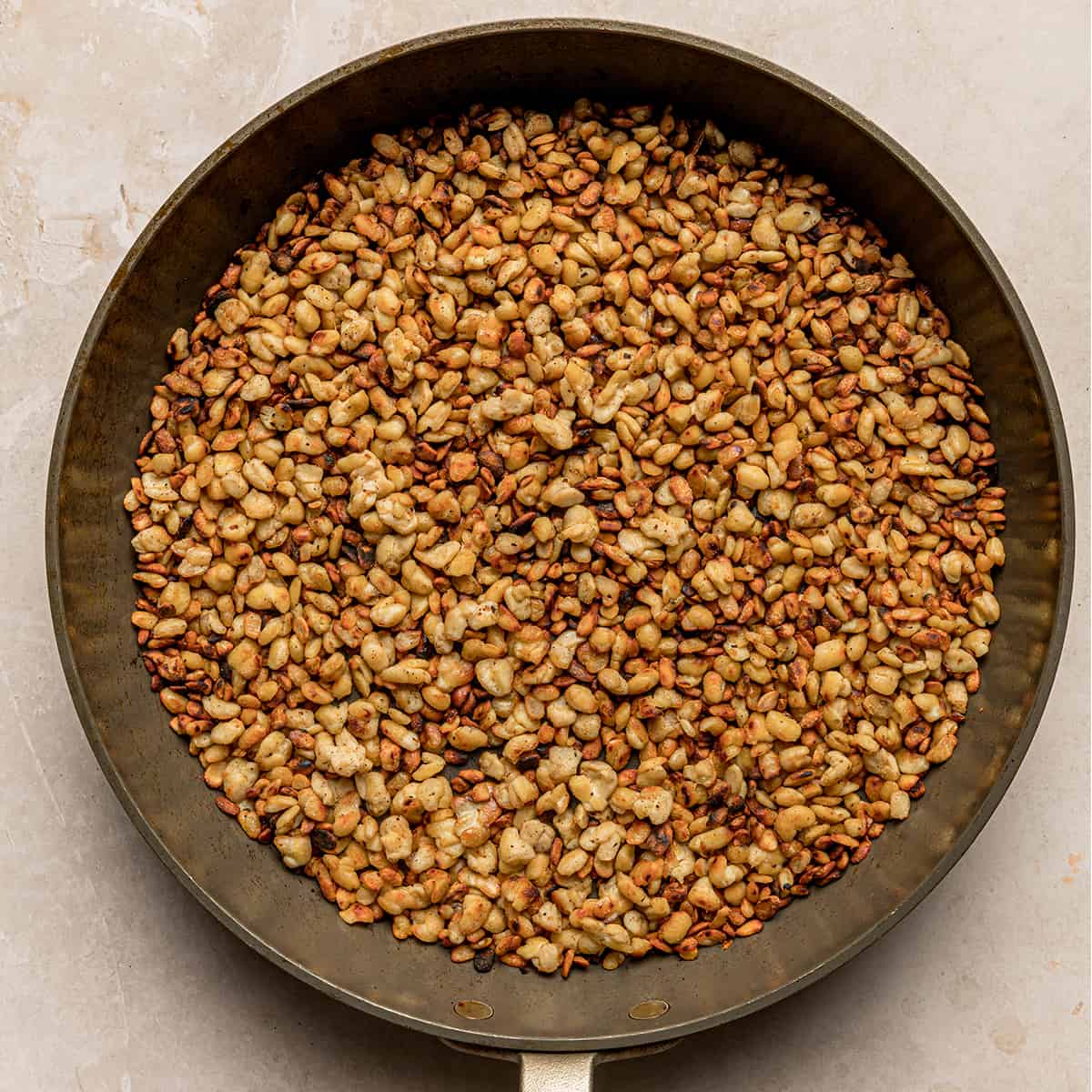
Frequently Asked Questions
Can you bake tempeh? What about air frying?
You can of course bake and air fry tempeh, but these are not cooking techniques I enjoy or recommend.
In my experience, the dry heat of the oven/air fryer tends to dry tempeh out even when paired with a great marinade. The tempeh tends to “eat up” the marinade and mute the flavors.
What brands of tempeh do you recommend?
The most commonly available brand of tempeh sold in U.S. grocery stores is Lightlife. I almost always buy their “original” tempeh, and it can usually be found at major grocery stores, including Vons/Safeway, Albertsons, Whole Foods, Sprouts, Fairway, Key Food, and even Target.
. I’ve also seen tempeh sold by the brands Franklin Farms and Tofurky, but not as frequently.
How long does tempeh take to cook?
Tempeh slices and crumbles will take anywhere from 5 to 10 minutes to become golden and crispy when pan-fried. However, the cooking time will vary depending on how the tempeh was prepared (steamed ahead of time, marinated, cooked in a sauce, etc.).
Can you eat raw tempeh?
Tempeh is safe to eat raw. But do I recommend it? Definitely not.
Its naturally bitter and earthy flavors make raw tempeh quite unappetizing. To enjoy tempeh to the fullest, I always recommend soaking it in a marinade and/or pan-frying it with a tart, sweet, and salty sauce.
How do you store leftover cooked tempeh?
Leftover cooked tempeh will stay fresh for about 5 days when stored in an airtight container in the refrigerator. To get its crispy edges back, reheat the tempeh in a lightly oiled skillet over medium heat until it’s warmed through.

Now that you’re an expert on cooking tempeh, is it your new go-to plant-based protein? Let me know how you plan on using your deliciously crispy and flavorful tempeh in the comments!







